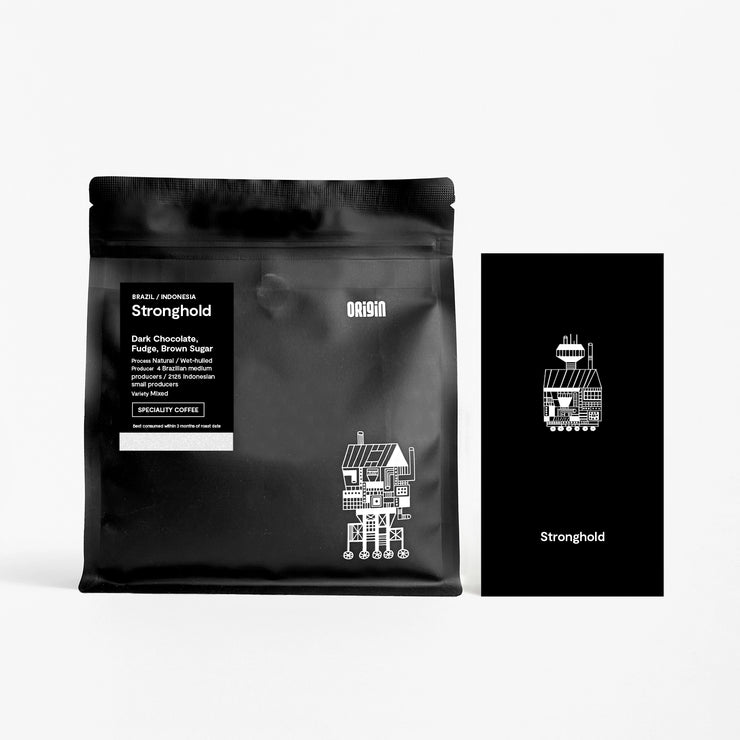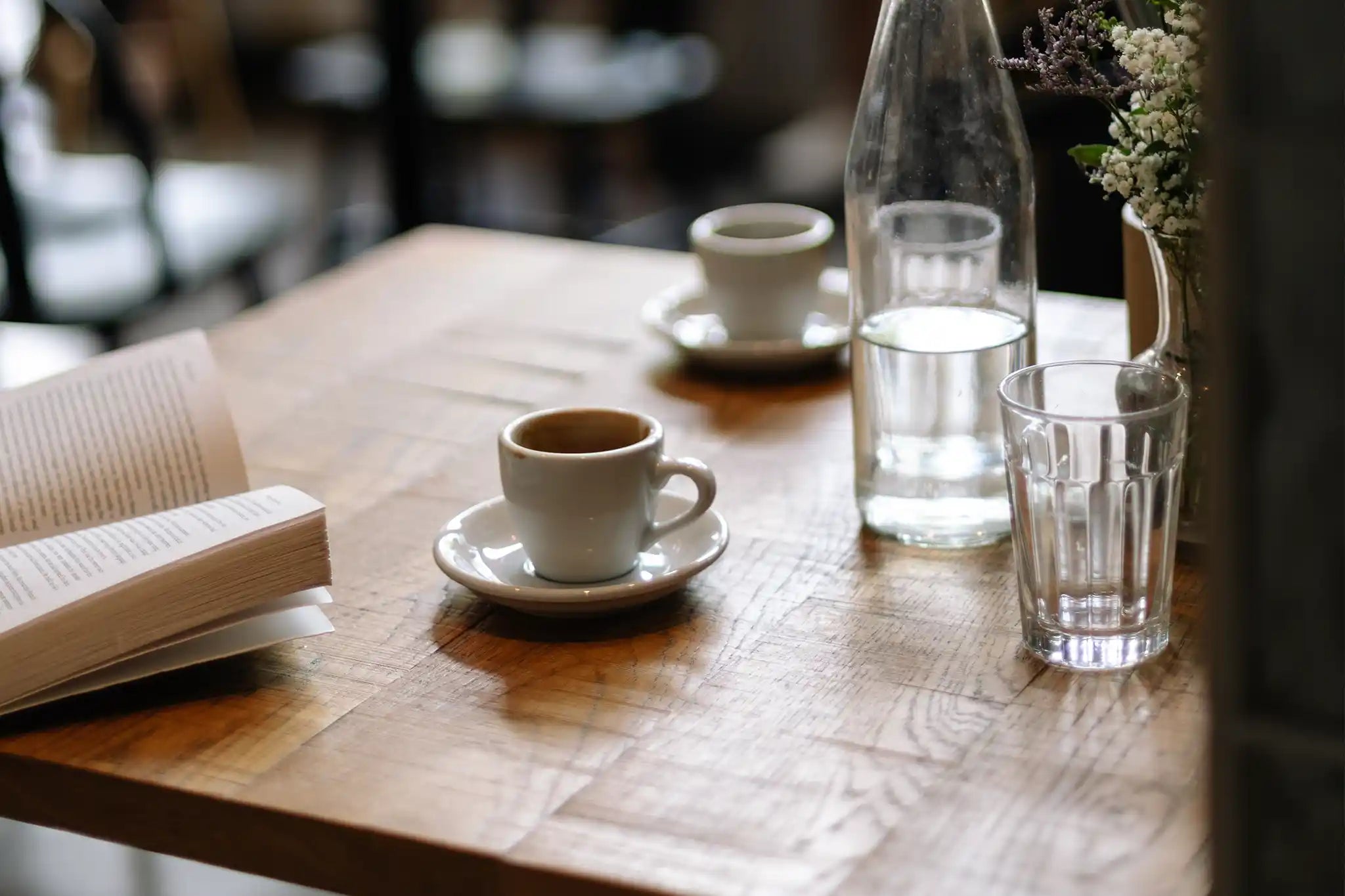
What is Espresso?
- What is Espresso?
- The Espresso Coffee Brewing Method: Key Characteristics
- The Coffee Extraction Process
- Espresso Extraction Time
- Espresso Machine Pressure
- Best Bar Pressure for Espresso
- Crema
- Serving Size
- Taste & Aftertaste
- Espresso Shots: Everything You Need To Know
- What is a shot of Espresso?
- How much caffeine is there in an espresso shot?
- What does a perfect espresso shot look like?
- How to Serve Espresso
- How to Drink Espresso
- Coffee Vs Espresso
- Coffee Bean Roast Time
- Coffee Bean Grind Size
- Serve Size
- Flavour Characteristics
- The Brewing Process
- Contact Time with Water
- Water Temperature
- Popular Drinks Made With Espresso
- Espresso Brewing Equipment: The Essentials
- An Espresso Machine
- A Coffee Grinder
- Coffee Scales
- A Tamper and Tamping Mat
- Quality Coffee
What is Espresso?
In this expert guide we ask, what is espresso? We’ll explore what’s in an espresso, the difference between a single and a double shot, how to make an espresso, and the history of the classic essential component in many of your favourite coffee shop menu options, from an Americano to a flat white.
The espresso is a small, strong coffee drink with a big history. As the base of most coffee drinks, espresso is produced by brewing with an espresso coffee machine. The espresso coffee machine has evolved since the first design patent was produced in 1884, though it was never marketed. Luigi Bezzera picked up the inventor’s reins, patenting an espresso machine design in 1901. Bezzera sold the patent to Desiderio Pavoni who, with the addition of a pressure release valve and steam wand, presented the machine at the Milan Fair in 1906, announcing the invention of ‘caffe espresso’. While providing a fast coffee solution compared with other methods of brewing at the time, the machine was essentially a boiler that didn’t produce enough pressure for true espresso extraction. The biggest development for the future of making espresso came in 1946 when Achille Gaggia introduced the spring lever, aiding pressure and speed. In 1961, Ernesto Valente introduced a motorised pump to the espresso machine, maintaining pressure while using mains water: the modern espresso machine was born, and the rest is history.
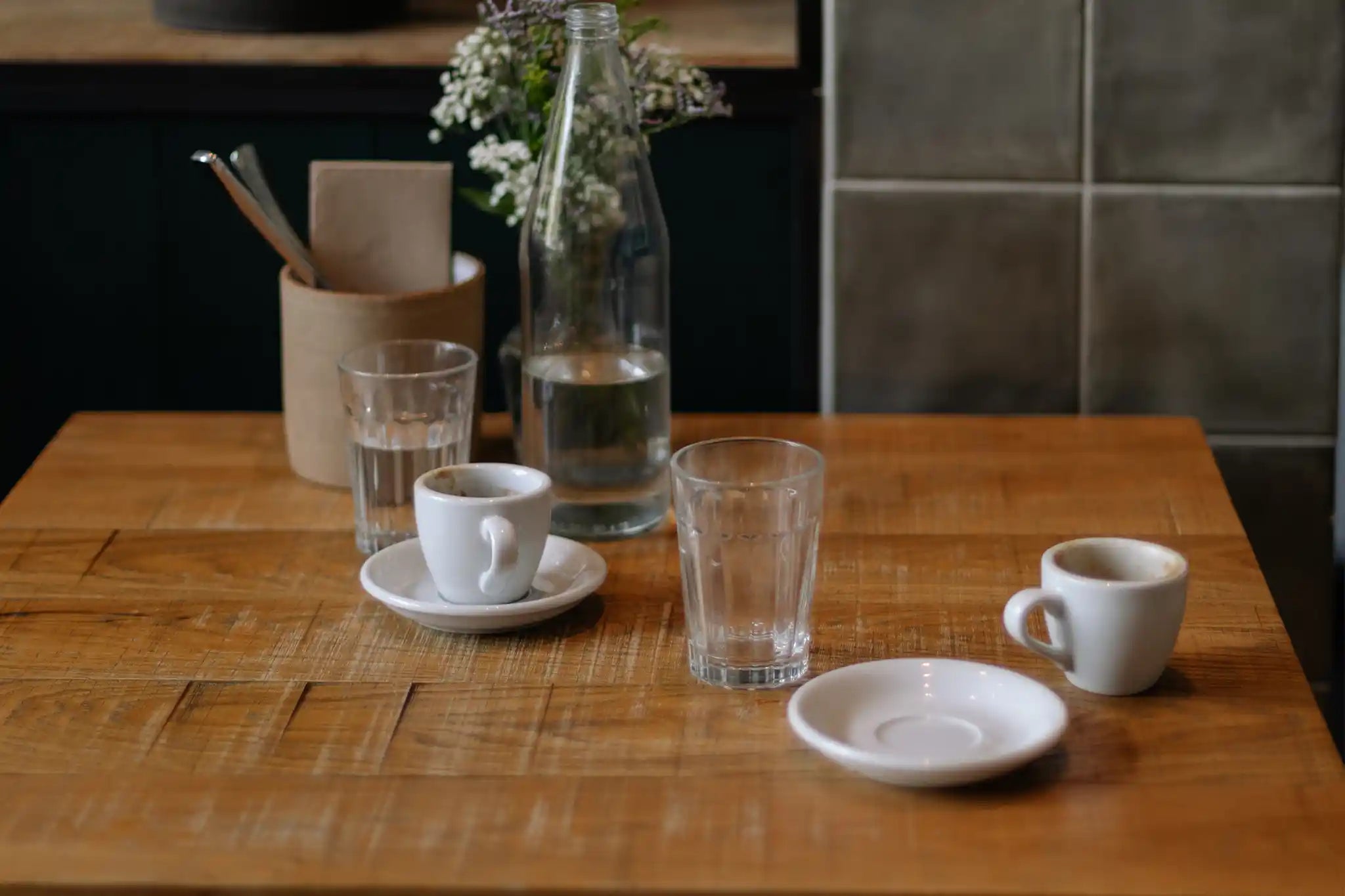
The Espresso Coffee Brewing Method: Key Characteristics
Brewing the perfect espresso shot involves a few key steps, making this a skilled process as well as an enjoyable daily ritual. Here were investigate the process of brewing, the look and taste of the espresso, as well as the importance of time, and pressure for espresso, to understand the essentials needed for the espresso brewing method.
The Coffee Extraction Process
Just as with any coffee brewing method, the coffee extraction process for espresso is key in crafting a good cup. Unlike with some brewing methods which require a manual extraction process (such as an AeroPress or a V60), an espresso coffee machine is used to extract the shot of espresso. To extract the perfect espresso shot you need finely ground coffee, water, heat, and pressure.

Espresso Extraction Time
When it comes to extracting a shot of espresso, single or double, you’ll want to time it to make sure the espresso isn’t under or over extracted. If the espresso is extracted too quickly, your shot will taste acidic and lack body; when over extracted, your shot of espresso will taste bitter and dull. A great tasting espresso shot will be extracted between 28 and 32 seconds: this is the sweet spot for a flavourful, expressive espresso experience.

Espresso Machine Pressure
An espresso machine uses a high level of pressure to extract the espresso shot. Pressure is a measure of the force that the atmosphere exerts. To make an espresso, pressure needs to be controlled. Finely ground coffee is tamped in the portafilter, creating a coffee puck—this dense, uniform area of coffee provides a resistance to water when the espresso shot is pulled through using pressure. On a few home espresso machines, the ability to manipulate the pressure is limited—and sometimes not possible at all; this isn’t to say that these machines won’t produce a great espresso—you just can’t experiment as much, tailoring every variable of your brewing. The pressure level of your espresso machine can affect the taste, texture, aroma, and colour of the espresso shot. If the pressure is too low, your espresso might pull through looking weak and thin, with a sour taste, most likely under extracted; if the pressure level is too high, you could end up with an over extracted espresso that tastes bitter and astringent, with a dark, uneven, and bubbly crema.
Best Bar Pressure for Espresso
Pressure for espresso brewing is essential; unlike filter coffee, which relies on gravity, coffee brewed using the espresso brewing method requires a high level of pressure. While it’s not the exception, the standard bar pressure recommended by coffee experts is nine bars of pressure for a quality espresso extraction.
Crema
While it arguably has aesthetic appeal, there’s more to the crema on the top of your espresso than simply looking good. It all comes down to science. When coffee beans are roasted, carbon dioxide (CO2) forms inside them; when the water in the espresso coffee machine is under pressure, it can dissolve more C02. As the espresso shot is pulled, the brewed content in the cup returns to normal pressure. This shot of espresso coffee, as a liquid, can’t contain all the C02, and so it is released in tiny gas bubbles. The gas bubbles can’t fully escape, getting trapped in the espresso liquid, forming what is known as crema.
Crema is a signature later in an espresso: you won’t find it in manual brewing methods, such as a pour-over coffee; crema can’t be produced without pressure. Freshly roasted and ground coffee will produce more crema—but a good crema on the top of your espresso isn’t a guarantee of a good coffee: taste is still key.
Serving Size
Most standard espresso cups are designed so that they can serve a single shot of espresso with an average serving size of 30ml, and double shot of espresso, with an average serving size of 60ml.
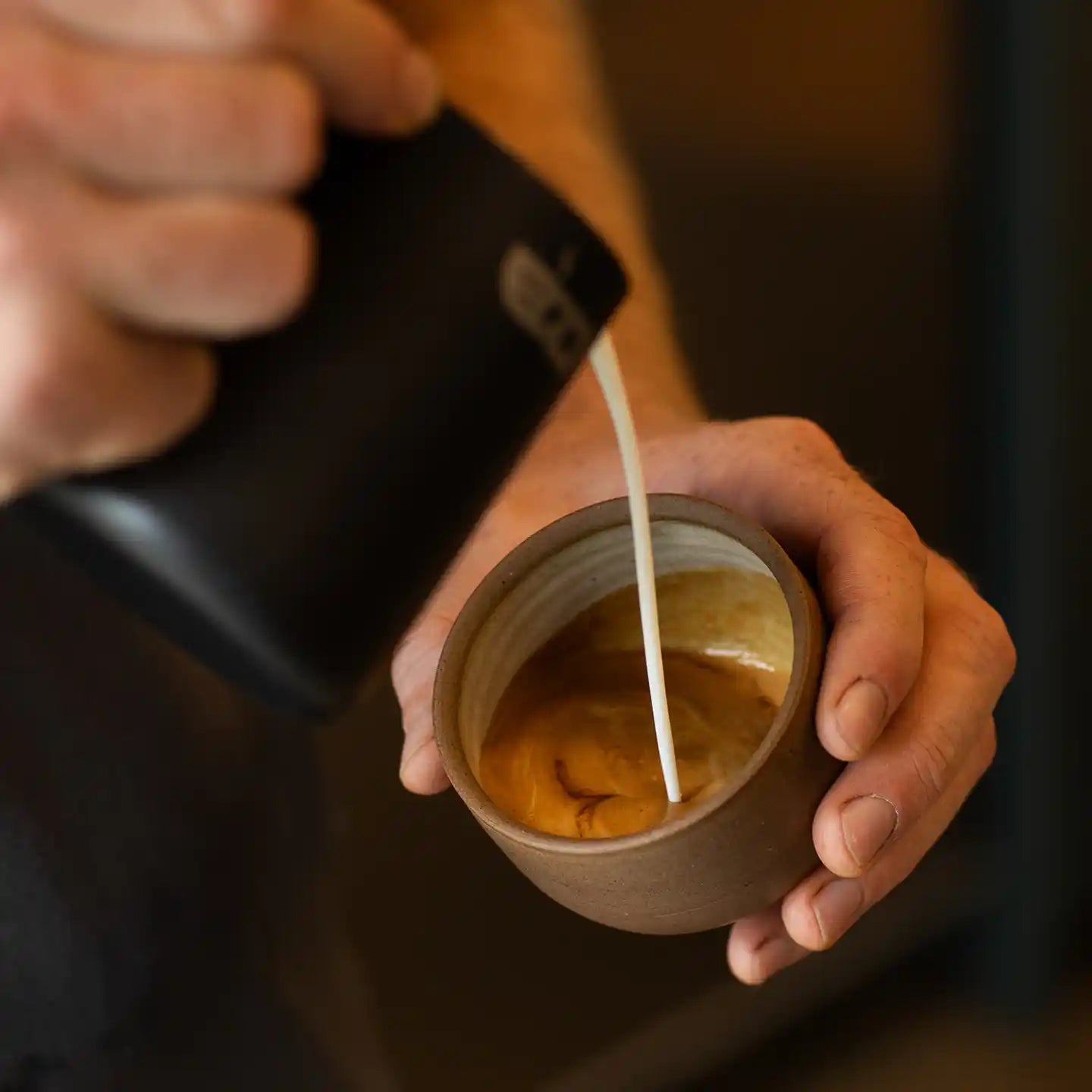
Taste & Aftertaste
A well extracted cup of espresso will have a balance of bitterness, acidity, and sweetness. While it’s a short drink, enjoyed normally in just a few short sips, the tasting notes in an espresso are celebrated for their complexity. Intense. Smooth. Sweet. Rich. The next time you brew an espresso to enjoy, make note of some of the adjectives that come to mind with each sip. A brilliant espresso won’t be overpowered by any one single note; each will complement the other.
Aftertaste is the final sensory experience that comes with enjoying a quality cup of coffee. Aftertaste, also referred to as ‘finish’, is the lingering taste that hangs around after you’ve finished your cup of coffee. The aftertaste of an espresso is particularly potent and can linger for up to fifteen minutes following that last sip.

Espresso Shots: Everything You Need To Know
When it comes to preparing and pulling a shot of espresso, there
are a few key things to know that will help you perfect the process and enjoy a
perfectly crafted cup.
What is a shot of Espresso?
A shot of espresso is one or two fluid ounces (30 or 60ml),
depending on whether you’ve asked for a single or a double espresso; it’s a
concentrated form of full, flavourful coffee that is brewed on an espresso
machine and served most commonly in a demitasse cup.
How much caffeine is there in an espresso shot?
The amount of caffeine in your espresso shot will vary, depending
on numerous factors, including the type of coffee used (Robusta has more
caffeine than Arabica); the roast type (the darker the roast, the less
caffeine), and the brewing method. A single shot of espresso, on average, will
contain around 60mg of caffeine; you can expect about 110mg of caffeine in a
double shot.
What does a perfect espresso shot look like?
It’s pretty hard to tell if your shot of espresso is going to be
great, based solely on looks—but as the shot begins to pull, you’ll soon see if
it’s pouring too fast or slow; too fast, and it’s going to be under-extracted;
too slow, and you’ll have an over-extracted espresso. Once in the espresso cup
for serving, a good – but not guaranteed – indication of a perfect espresso
will be noted in the appearance of a thick crema (the Italian word for
‘cream’).

How to Serve Espresso
The espresso is a small serving of coffee with big impact. Traditionally,
the espresso is served in a demitasse cup. Some coffee shops will serve your
single or double espresso shot with a saucer and teaspoon; some places may
choose to serve it in a small glass. At home, you can choose your own favourite
vessel for drinking: you might prefer the tactile approach of something
handmade or find that the temperature keeps better in one type of cup over the
other: it’s entirely up to you.
You might like to serve your espresso with a small glass of still
or sparkling water—something that has been common practice for a long time in
Italy. Sparkling water is thought to act as a palate cleanser, while the
bubbles are thought to stimulate your taste receptors.
How to Drink Espresso
While the small size of the espresso coffee drink might lead you
to believe that this is a coffee to be downed in one, much like an alcoholic
shot, this isn’t the case. An espresso, while a short drink, is to be savoured.
Your espresso should be enjoyed in just a few sips – certainly before it has
time to cool – but definitely not as a gulp.
Whether you’re stood up at the coffee counter, or making time to
take a seat, there are a few things to consider before you take that first sip.
Some people choose to scrape the crema off the top of their espresso before
they drink; others prefer to stir the crema in with their coffee. Crema not
only looks good, freshly served, and passed from barista to you, but it’s an
indicator of the freshness of your coffee. On top of this, crema holds in the
aromas in your cup for longer. Crema simply doesn’t taste great, and its
bitterness can impact the overall flavours in your espresso. But, if you choose
to stir your espresso, you’ll be blending those flavours. Espresso separates
after brewing, with the heavier, syrupy elements settling at the bottom; lighter
elements will float to the top. Enjoy experimenting with your taste experience:
try drinking your espresso without stirring, and then see how the tasting notes
change between that first and final sip; compare with an espresso that you’ve
stirred. Which is your preference?
Explore Our Favourite Espresso Blends
Coffee Vs Espresso
Espresso is coffee—but not all coffee is espresso. Confused?
Here’s a simple definition: espresso is a type of coffee brewing method. Coffee,
ground a certain size, is brewed on an espresso coffee machine, which uses high
pressure, to create an espresso.
Coffee Bean Roast Time
You’ll often see that some coffee roasteries roast coffee specifically for espresso brewing. Traditionally, darker roasted coffee beans are used for espresso brewing—but this isn’t a strict rule. Some roasteries choose to roast certain coffee beans for specific brewing methods, such as for espresso, while others choose a more omni approach, roasting lighter with a view that this retains more of the complexity of flavours. A darker roasted coffee will be roasted for longer than a lighter roasted coffee. For espresso brewing and coffee brewing methods including Chemex and Kalita Wave, you can choose to use a dark or lighter roast—it’s all about personal taste. Consider if you’ll be adding milk or a dairy alternative to your coffee and check out the tasting notes on your bag of coffee to decide how you’ll enjoy brewing and drinking: chocolate, nut, and sugar tasting notes might taste delicious with milk, while some fruit and floral notes in your coffee can be appreciated better as a long black or classic espresso.
Coffee Bean Grind Size
If you’re lucky enough to own your own grinder, you’ll want to make sure you have your grind size just right for brewing a shot of espresso, which requires a much finer grind than any other coffee brewing method, such as Chemex or French Press which both use a coarser grind. Coffee ground for espresso will be powdery fine, with a consistency similar to table salt. If you’re grinding your coffee at home, explore the settings to find the right grind for your coffee and machine, as each grinder comes with its own range of grind capabilities.
Serve Size
In most coffee shops, it’s common for your coffee order to pour a double shot of espresso as standard, unless you request otherwise—and this isn’t just limited to your standalone cup of espresso: your flat white most likely has a double shot, too. The difference, then, comes to the size of the vessel, and the ratio of other ingredients. For example, a flat white is served in a 6oz cup; a latte is in an 8oz cup, as it has a larger ratio of milk to coffee.
Your espresso, whether a single shot of a double shot, will most often come served in a 2oz demitasse cup (the small espresso cup you’ll commonly see among the other cups lining the top of the espresso coffee machine where they keep warm). This standard shot of espresso (double) is 36ml, extracted from 18g of ground coffee. The brew recipe ratio for espresso is 1:2.
For other types of coffee brewing, such as a batch brew, or a pour-over method such as a V60, the ratio of coffee to water will vary, depending on the size of the vessel you’re hoping to fill (or how many cups you’re looking to serve).

Flavour Characteristics
The flavour characteristics of an espresso are distinctive; while some brewing methods are celebrated for creating a more delicate coffee experience, espresso flavour characteristics are rich, full bodied, and strong. A perfect espresso shot will have a balance of flavours that linger; other coffee brewing methods, such as a pour-over will have a balance of flavour too, if brewed well, but they might be lighter, and less full-bodied.
The Brewing Process
The brewing process for making espresso uses high pressure for extraction;
the pressure for espresso is much higher than other methods of brewing. Many
other methods of brewing use gravity for the extraction: the water poured over
the ground coffee, which then slowly passes through the grinds and filter
paper, into the vessel below. With espresso brewing, the water is pushed
through the ground coffee using the force of high pressure.
Contact Time with Water
Brewing an espresso uses hot water, just the same as any other coffee brewing method—the difference in brewing method between espresso and coffee, is the contact time. Brewing for espresso has the shortest contact time with water, with a sweet spot between 28 and 32 seconds. By comparison, a coffee brewing method such as a Chemex spends several minutes in contact with water.
Water Temperature
Most coffee brewing methods require hot water, with a recommended brewing temperature of around 97c. When making an espresso, the water is heated in an espresso machine; a crucial element, alongside many other factors, is the stability of the water temperature for the espresso extraction. The high temperature and the high pressure for espresso are key to making a well extracted coffee.
Popular Drinks Made With Espresso
Walk into your favourite speciality coffee shop, and you’ll find a
menu with plenty of espresso-based coffee drinks. Among the most popular coffee
drinks, are the flat white, the latte, and the cappuccino. A mocha uses
espresso as its base ingredient, too, as does a long black or Americano.
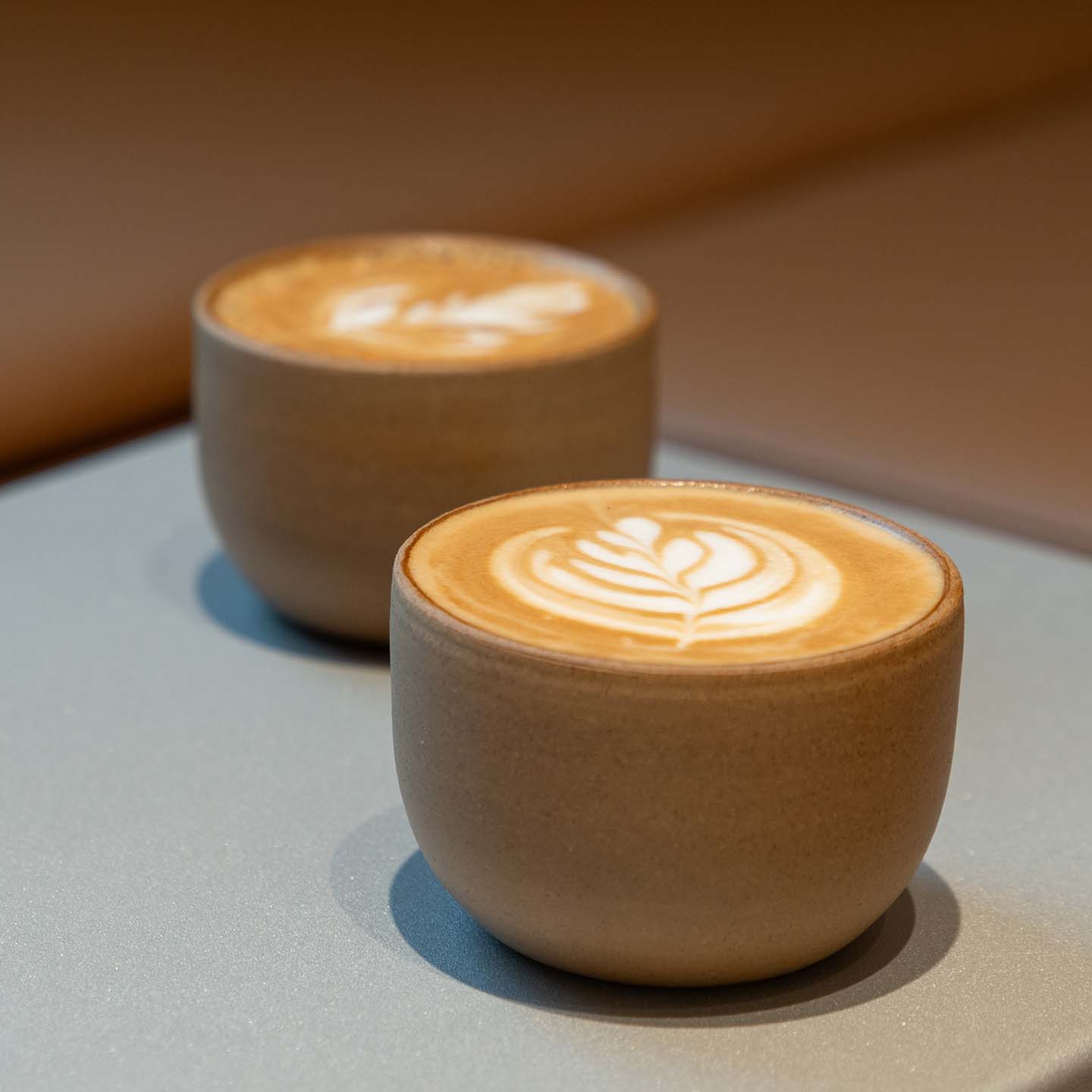
Espresso Brewing Equipment: The Essentials
For any keen coffee enthusiast, an espresso brewing set up at home is the ultimate goal. While creating an espresso brewing home set up is something of an investment, with good care, these essential pieces of kit will guarantee you years of enjoyment. Here’s our complete shopping list for everything you need to make an espresso at home.
An Espresso Machine
An espresso machine is an absolute essential—and a worthy investment if you appreciate the daily ritual of making a quality cup of espresso at home. There are plenty of barista-approved espresso machines available these days, with a range of prices to suit all needs and budgets. From bean to cup espresso machines and those that boast dual boilers, to digital displays and programmable functions, a little research goes a long way when it comes to choosing the right espresso machine for you. This handy buyer’s guide might help.
A Coffee Grinder
Some espresso coffee machines come with a built-in grinder; these are often called bean to cup machines. You can also look to buy a standalone electric coffee grinder, or choose a manual, hand grinder (you can find electric versions for hand grinders, too, providing you with plenty of options. While all coffee grinders will grind your coffee beans, not all coffee grinders – such as portable hand grinders – are designed to grind for espresso, which requires a very fine grind. While a coffee grinder is a great addition to your home brewing coffee set up, space and budget mean it’s not always possible—and it’s definitely not a deal breaker, with speciality coffee roasters and independent speciality coffee shops able to grind to your brewing preference.
Coffee Scales
No matter how good you think your eye is, or how many times you’ve made coffee at home, guessing the amount of coffee you need in your portafilter basket will result in a poorly extracted espresso shot. Coffee scales (rather than your standard kitchen scales) are designed with accuracy in mind. Many high-end coffee scales can weigh with an accuracy within 0.1g, providing consistency and precision. Depending on your brewing needs, you can also find coffee scales with smart features including app connectivity to your phone, and different brew modes and step by step guides.
A Tamper and Tamping Mat
If your espresso machine didn’t come with a tamper, you’ll need to add one of these to your home brewing equipment set up (and you still might prefer to upgrade the one that came with your machine). Tamping the ground coffee in the portafilter basket means applying force, compressing to create more resistance against the flow of water. Incorrect tamping can lead to an inconsistent extraction, with a loss of flavours and aromas, which means you can’t just go using any old thing in your kitchen drawer as a makeshift tamper. You might want to consider placing a simple mat on your kitchen counter too, to make sure you’re protecting the portafilter, and tamping on a level, firm surface.
Quality Coffee
A high quality, freshly roasted bag of coffee is essential. Look for the roast date on your bag of coffee; you should look to let your coffee rest for at least a week before brewing with it; coffee should be used within three months of its roast date. Coffee ground fresh for your brew is best, but if you don’t have access to a grinder, look to keep your ground coffee stored in an airtight container to help preserve the freshness for longer. Finally, don’t forget your favourite cup to enjoy your espresso.



